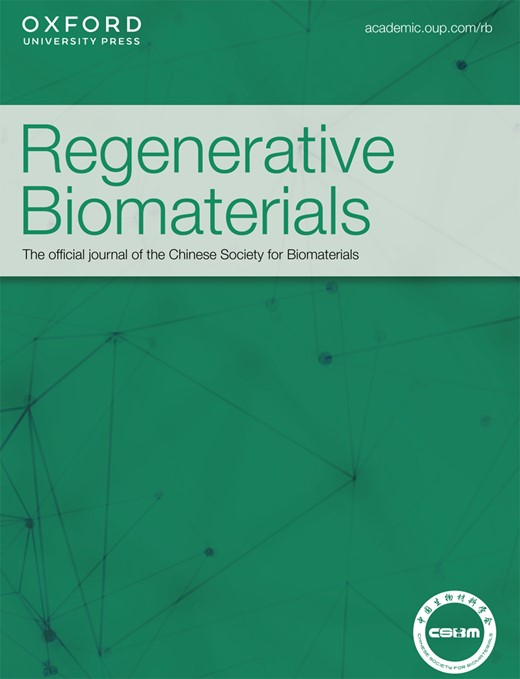Research progresses on mitochondrial-targeted biomaterials for bone defect repair
IF 5.6
1区 医学
Q1 MATERIALS SCIENCE, BIOMATERIALS
引用次数: 0
Abstract
In recent years, the regulation of the cell microenvironment has opened up new avenues for bone defect repair. Researchers have developed novel biomaterials to influence the behavior of osteoblasts and immune cells by regulating the microenvironment, aiming to achieve efficient bone repair. Mitochondria, as crucial organelles involved in energy conversion, biosynthesis, and signal transduction, play a vital role in maintaining bone integrity. Dysfunction of mitochondria can have detrimental effects on the transformation of the immune microenvironment and the differentiation of stem cells, thereby hindering bone tissue regeneration. Consequently, targeted therapy strategies focusing on mitochondria have emerged. This approach offers a wide range of applications and reliable therapeutic effects, thereby providing a new treatment option for complex and refractory bone defect diseases. In recent studies, more biomaterials have been used to restore mitochondrial function and promote positive cell differentiation. The main directions are mitochondrial energy metabolism, mitochondrial biogenesis, and mitochondrial quality control. In this review, we investigated the biomaterials used for mitochondria-targeted treatment of bone defect repair in recent years from the perspective of progress and strategies. We also summarized the micro-molecular mechanisms affected by them. Through discussions on energy metabolism, oxidative stress regulation, and autophagy regulation, we emphasized the opportunities and challenges faced by mitochondria-targeted biomaterials, providing vital clues for developing a new generation of bone repair materials.用于骨缺损修复的线粒体靶向生物材料研究取得进展
近年来,细胞微环境调控为骨缺损修复开辟了新途径。研究人员开发了新型生物材料,通过调节微环境来影响成骨细胞和免疫细胞的行为,从而实现高效的骨修复。线粒体作为参与能量转换、生物合成和信号转导的重要细胞器,在维持骨骼完整性方面发挥着至关重要的作用。线粒体的功能障碍会对免疫微环境的转化和干细胞的分化产生不利影响,从而阻碍骨组织的再生。因此,针对线粒体的靶向治疗策略应运而生。这种方法应用广泛,疗效可靠,为复杂难治的骨缺损疾病提供了一种新的治疗方案。在最近的研究中,越来越多的生物材料被用于恢复线粒体功能和促进细胞正向分化。主要方向包括线粒体能量代谢、线粒体生物生成和线粒体质量控制。在这篇综述中,我们从进展和策略的角度研究了近年来用于线粒体靶向治疗骨缺损修复的生物材料。我们还总结了受其影响的微分子机制。通过对能量代谢、氧化应激调控和自噬调控的讨论,我们强调了线粒体靶向生物材料面临的机遇和挑战,为开发新一代骨修复材料提供了重要线索。
本文章由计算机程序翻译,如有差异,请以英文原文为准。
求助全文
约1分钟内获得全文
求助全文
来源期刊

Regenerative Biomaterials
Materials Science-Biomaterials
CiteScore
7.90
自引率
16.40%
发文量
92
审稿时长
10 weeks
期刊介绍:
Regenerative Biomaterials is an international, interdisciplinary, peer-reviewed journal publishing the latest advances in biomaterials and regenerative medicine. The journal provides a forum for the publication of original research papers, reviews, clinical case reports, and commentaries on the topics relevant to the development of advanced regenerative biomaterials concerning novel regenerative technologies and therapeutic approaches for the regeneration and repair of damaged tissues and organs. The interactions of biomaterials with cells and tissue, especially with stem cells, will be of particular focus.
文献相关原料
| 公司名称 | 产品信息 | 采购帮参考价格 |
|---|
 求助内容:
求助内容: 应助结果提醒方式:
应助结果提醒方式:


